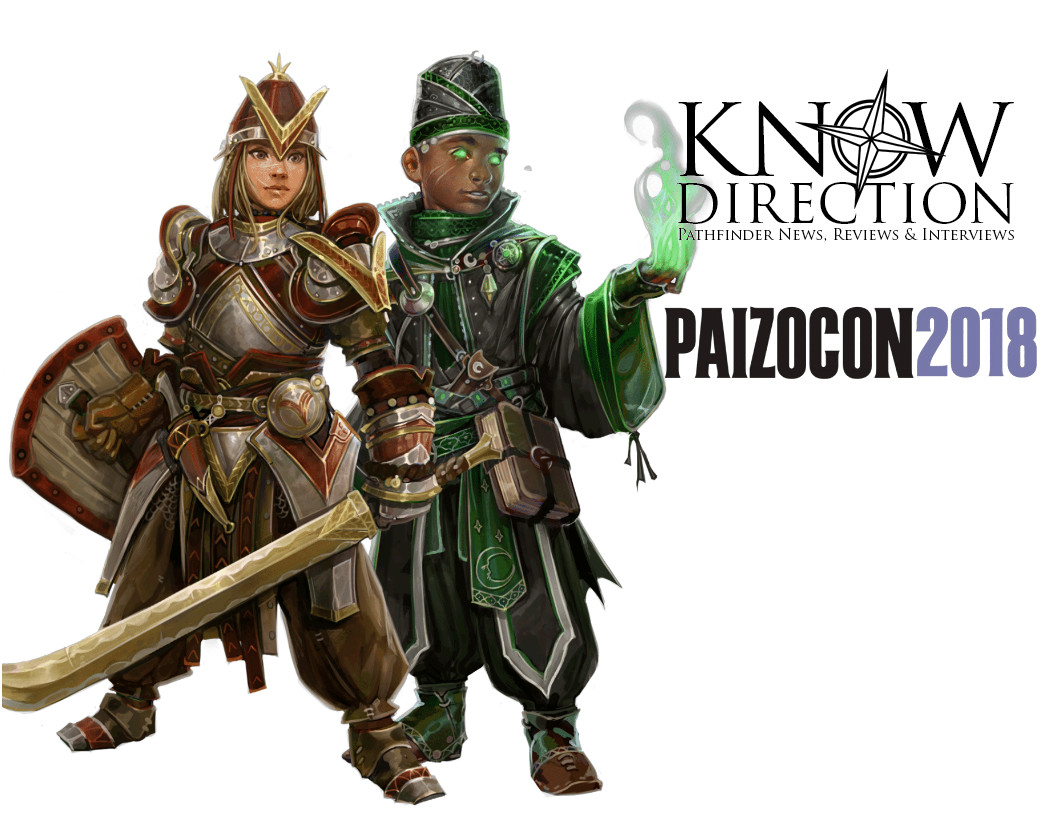We’ve come up with the plot, NPCs, encounters, and names… now what? We need to write the darn thing. This can be one of the hardest parts of writing an adventure because it’s the part that feels the most like work. Let’s look at some of the tactics I use to break up the mountain of words you need to produce to write an adventure and make the entire thing fun.
Formatting
Once I’m ready to type my adventure, I usually create a template an encounter, then paste it into a word processor for each encounter in the adventure. If you’re working with a publisher, they probably have a template already. Here’s an example of one you could use:
A. SECTION TITLE OR AREA
Boxed text
Tell the GM what this part is about and where it takes place, as well as any background. Establish norms for the environment such as ceiling height, wall material, and light levels.
A1. First Encounter/Sub-Area
Boxed text
Tell the GM about this location specifically, including any relevant background.
Hazards: Any environmental conditions or specific effects to track?
Traps: Any actual traps?
Creatures: What creatures are here now; what are they doing without PC intervention. How will they likely react to the PCs?
STAT BLOCKS
Treasure: What sorts of goodies are lying around or in secret compartments, but not in the possession of creatures?
Progression: Does anything specific happen because of this encounter and the PC’s actions?
A2. Second Encounter/Sub-Area
REPEAT ABOVE
Once I’ve pasted all the sections and areas I need, I go back and label them all properly based on my outline. I even fill in short little blurbs into each area, even if they’re not eloquent (i.e. Creatures: kobolds, mostly ranged, one is an alchemist, construct that is also a wood chipper). By doing this, I create a good structure to work from and complete most of the boring formatting work. I can then go back and fill in each section. Now it’s fun to write because I don’t have to think as much about where I’m going to tell the GM about the secret door, I know it’s going in the room description. Even though I’ll mention a trap the kobolds set up, I won’t go into it in detail because the Traps section will include a brief description and stat block. Remove any sections you don’t need; don’t waste words on a section if it’s not helping the adventure.
Not Writing, Re-Writing
Understand that nothing is going to be perfect the first time around; nothing is going to be a masterpiece. You’re going to re-work, edit, alter, and polish everything. But that’s ok.
Instead of trying to make everything perfect the first time, just get the sections written up in a clear and concise manner. Don’t hide things from the GM, come right out and state them. You can go back a second time and edit yourself, re-writing each section to be better with each pass. I often take 3-5 passes at an entire adventure before turning it into my publisher.
The first time through I add basic factual statements and fragments just to get the ideas on the page: 10 ft. ceilings, dark, kobold tunnels that only small creatures can fit in easily, pit trap with swinging bar to sweep adventurers in, bio-luminescent fungus.
The second time through I turn those thoughts into full and complete sentences while organizing the information. I usually start with a physical description followed by the history of a location, including what happened there recently. I then dedicate a paragraph toward game-mechanic type information including skill DCs, secret doors, locked containers, and room height. It’s useful to have all the information for the GM in one paragraph, because they often look up this mechanical information in-game.
The third and subsequent passes are usually to reduce word count, improve clarity, and to read it from the GM’s perspective. Try and think: if I never read this adventure before, what information do I need? What things might the PCs do that I should prepare for? Asking those questions usually helps inform what sort of information is missing or anything else I should explicitly state.
Note to Self
 While writing, you’re going to have ideas for another part of the adventure. Don’t squash those ideas, you might forget them. Have some note paper handy to jot them down and come back to them later. If your adventure isn’t too large, you can even use the “comment” feature of most word processors to make notes to yourself for later.
While writing, you’re going to have ideas for another part of the adventure. Don’t squash those ideas, you might forget them. Have some note paper handy to jot them down and come back to them later. If your adventure isn’t too large, you can even use the “comment” feature of most word processors to make notes to yourself for later.
My comments are often to remind myself (or tell my developer) about a plot or mechanical decision I’ve made. I might be laboring between two different types of monsters, or whether to use multiple small foes or a couple of larger ones. I’ll do similar things with names I’m unsure about or even remaining tasks: name this, make a unique magic weapon if word count allows, double check the rules mechanics on this environmental effect, etc. I’ve found these little comments to be invaluable in the writing process.
Word Count
If you’re just writing the adventure for yourself, then word count doesn’t matter at all. However, if you’re writing for publication then you’re most likely going to have to hit a specific word count. Hit that word count, exactly if you can. If you end up +/- 5 words, then you’re doing ok. Though people think it’s hard to write 12,000 word adventures, the challenge is usually to reduce word count and get it under 12,000 words. There are a couple of tricks you can use to keep your word count down:
1) Remove all passive voice
MS Word and other modern word processors have a passive voice detector that will help you find it. Not only will your adventure sound more exciting, but it saves on word count.
2) Reduce adjectives and adverbs
Though it’s fun to say the halfling’s purple doublet with gold trim and ivory buttons gives him an ostentatious barring. You can also say he wears the finest fashions. This doesn’t give specifics, but it saves several potentially unimportant words. If it is important that his doublet is purple, then include that fact only. Also be stingy with adverbs and other unneeded words. “She very quickly jumps onto the incredibly tall wall,” is far more wordy than, “She leaps onto the wall.”
3) Give information once
When you parcel out information to the GM, choose the best time for the GM to learn the information and place it there. Only repeat yourself if the information is relevant in more than one encounter, and even then be sparing. For example, only mention the dungeon ceiling height once in the section description, not in every room or encounter.
What is your writing process? How do your strategies differ from the ones I use? Leave your own advice in the comments below.






